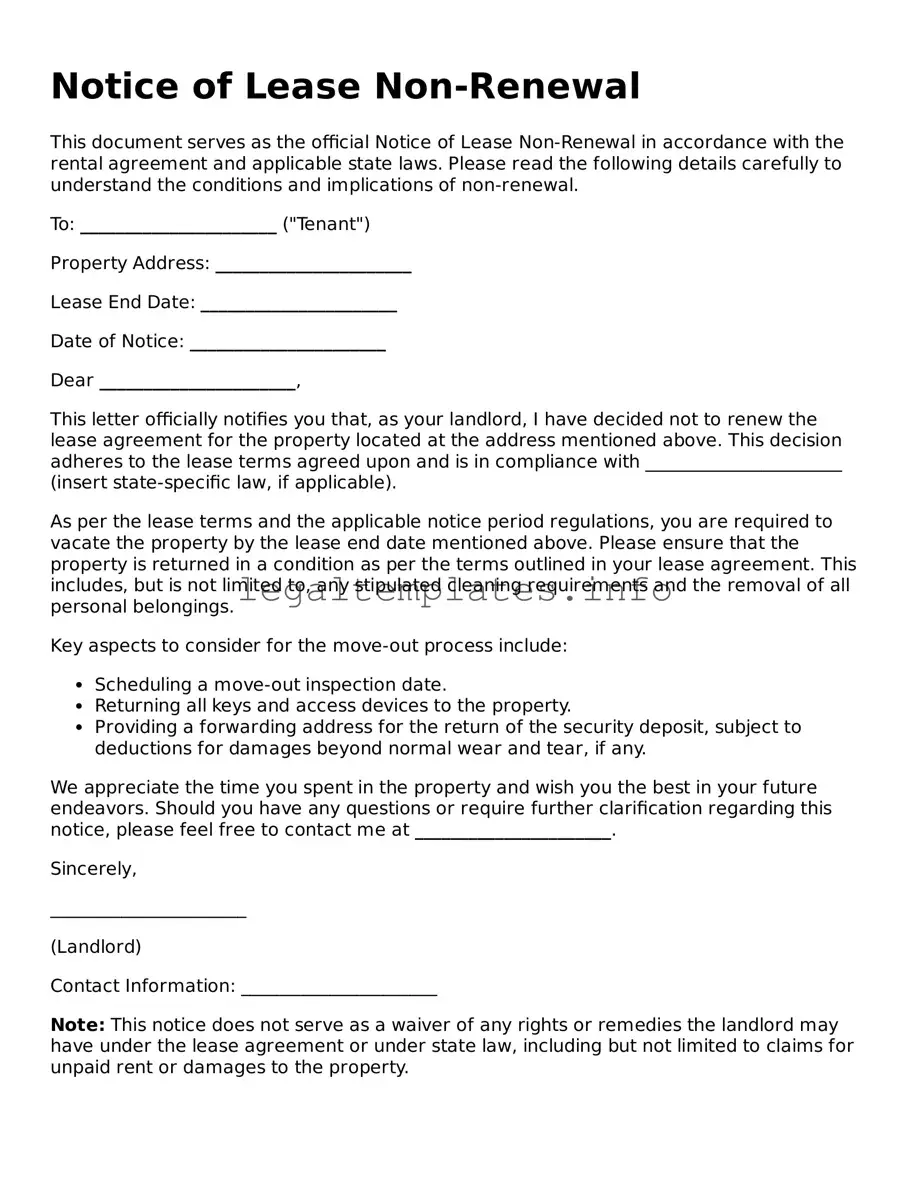What is a Notice of Lease Non-Renewal?
A Notice of Lease Non-Renewal is a document through which either a landlord or a tenant communicates their decision not to renew an existing lease agreement once it expires. This notice formally indicates that the lease will end on its scheduled expiration date and that the tenancy will not continue beyond this point.
When should a Notice of Lease Non-Renewal be sent?
This notice should be sent according to the time frame stipulated in the original lease agreement, typically 30 to 60 days before the lease's expiration date. It is important to refer to the terms of the lease to determine the specific notice period required.
Who can issue a Notice of Lease Non-Renewal?
Either the landlord or the tenant has the right to issue a Notice of Lease Non-Renewal. The decision to not renew the lease can originate from either party for various reasons such as changes in personal circumstances, plans to increase the rental rate, or simply a desire for change.
What information should be included in a Notice of Lease Non-Renewal?
The notice should include key information such as the date the notice is written, the names of the tenant(s) and landlord, the property address, the date when the current lease expires, and the date by which the tenant needs to vacate the property if the landlord is the one issuing the notice. It's also helpful to include a reference to the clause in the lease agreement that specifies the notice period for non-renewal.
How should a Notice of Lease Non-Renewal be delivered?
The lease agreement usually specifies the acceptable methods of delivering notices, including by mail, email, or in person. To ensure there is a record of receipt, it's advisable to deliver the notice through certified mail or with a method that provides confirmation of receipt.
What happens if a Notice of Lease Non-Renewal is not sent?
If neither party sends a Notice of Lease Non-Renewal, and if the lease does not specify otherwise, the lease may automatically convert to a month-to-month tenancy under the same terms, subject to state laws. This can lead to unintended legal and financial implications for both parties.
Can a Notice of Lease Non-Renewal be retracted?
Once a Notice of Lease Non-Renewal has been issued, retracting it requires the agreement of both parties. If the other party agrees to disregard the initial notice, it is best to document this agreement in writing to prevent future misunderstandings.
What legal implications does a Notice of Lease Non-Renewal have?
Issuing a Notice of Lease Non-Renewal is a legal step in ending a lease agreement in accordance with its terms, helping both parties to avoid potential disputes over holdover tenancy. Failure to issue or abide by such a notice can lead to legal disputes and financial liabilities.
Where can I find more information or assistance on drafting a Notice of Lease Non-Renewal?
More information and assistance on drafting a Notice of Lease Non-Renewal can be found through local legal aid organizations, real estate attorneys, or online resources that offer templates and guidance customized to state-specific laws and regulations.
